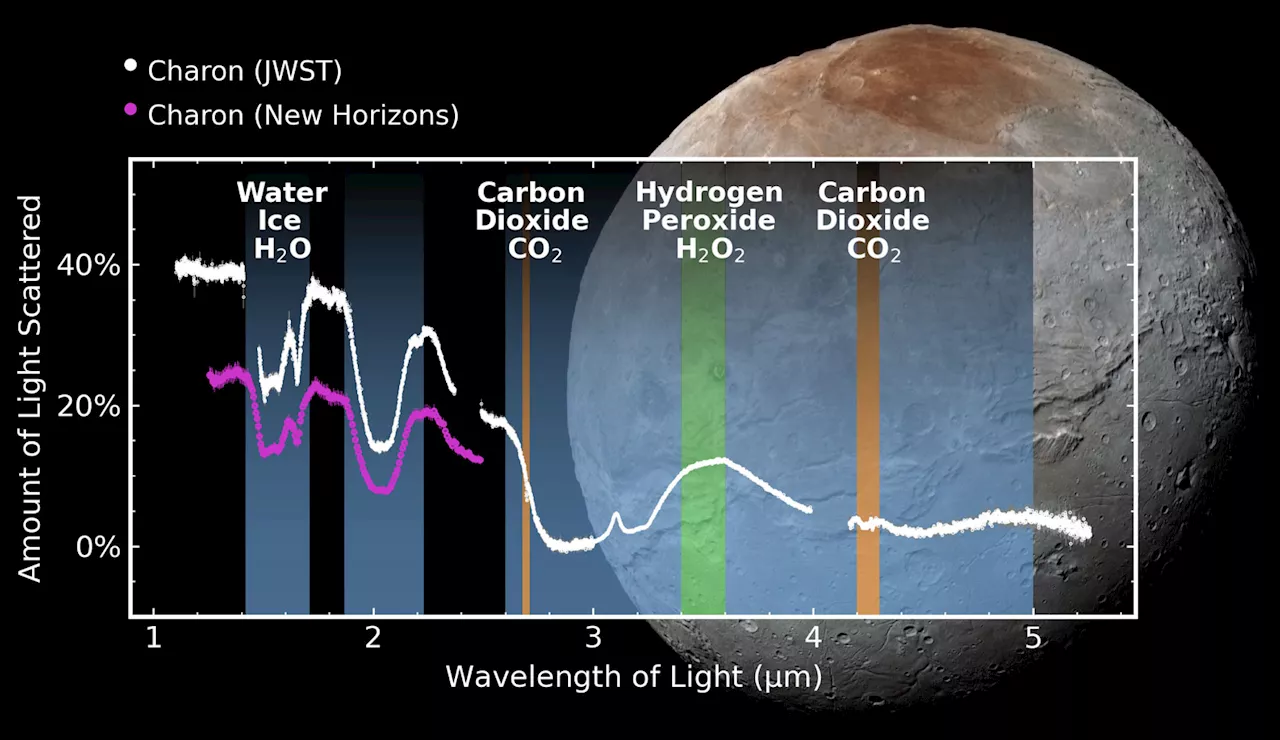Space and astronomy news
An SwRI-led team detected carbon dioxide and hydrogen peroxide spectral signatures on Pluto’s largest moon Charon using Webb telescope observations , which extend the wavelength coverage of previous New Horizons flyby measurements . Credit: SwRI
Webb spectroscopic measurements revealed signatures of carbon dioxide, which the team compared with laboratory measurements and detailed spectral models of the surface. They concluded that carbon dioxide is present primarily as a surface veneer on a subsurface rich in water ice. As Dr. Protopapa explained in a recent SwRI
“Our preferred interpretation is that the upper layer of carbon dioxide originates from the interior and has been exposed to the surface through cratering events. Carbon dioxide is known to be present in regions of the protoplanetary disk from which the Pluto system formed.”Hydrogen peroxide forms when water ice is broken down at the atomic level through exposure to ultraviolet light, charged particles from the Sun , and galactic cosmic rays.
United States Latest News, United States Headlines
Similar News:You can also read news stories similar to this one that we have collected from other news sources.
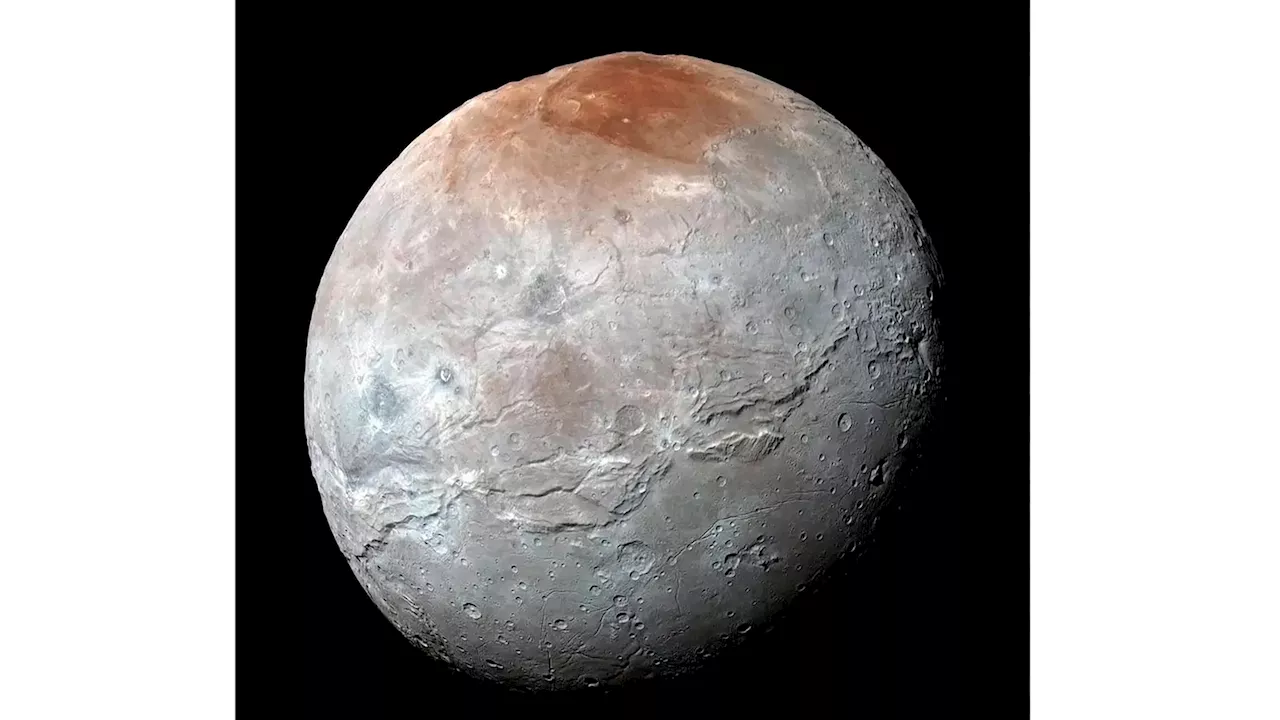 NASA's Webb telescope detects traces of carbon dioxide on the surface of Pluto's moonNASA’s Webb Space Telescope has identified new clues about the surface of Pluto’s largest moon
NASA's Webb telescope detects traces of carbon dioxide on the surface of Pluto's moonNASA’s Webb Space Telescope has identified new clues about the surface of Pluto’s largest moon
Read more »
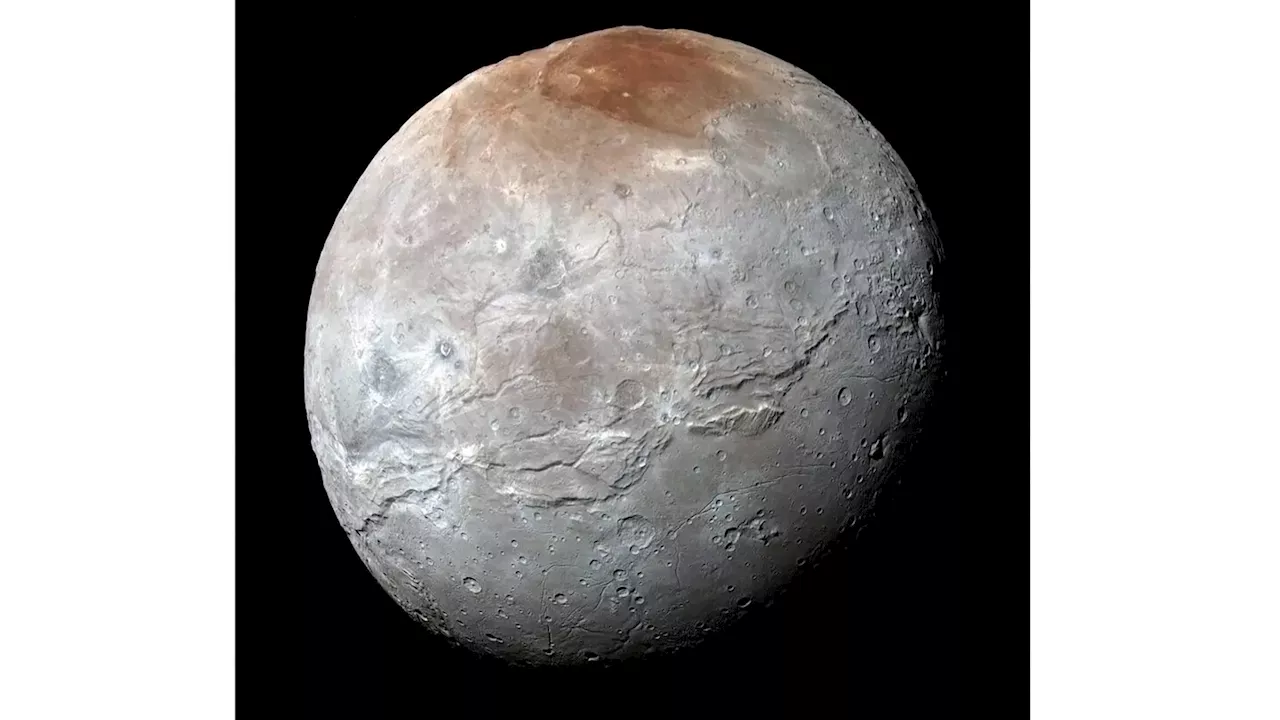 NASA's Webb telescope detects traces of carbon dioxide on a Pluto moonNASA’s Webb Space Telescope has identified new clues about the surface of Pluto’s largest moon. It detected for the first time traces of carbon dioxide and hydrogen peroxide on Charon's surface. Previous research, including a 2015 NASA flyby, showed that Charon's surface was coated by water ice.
NASA's Webb telescope detects traces of carbon dioxide on a Pluto moonNASA’s Webb Space Telescope has identified new clues about the surface of Pluto’s largest moon. It detected for the first time traces of carbon dioxide and hydrogen peroxide on Charon's surface. Previous research, including a 2015 NASA flyby, showed that Charon's surface was coated by water ice.
Read more »
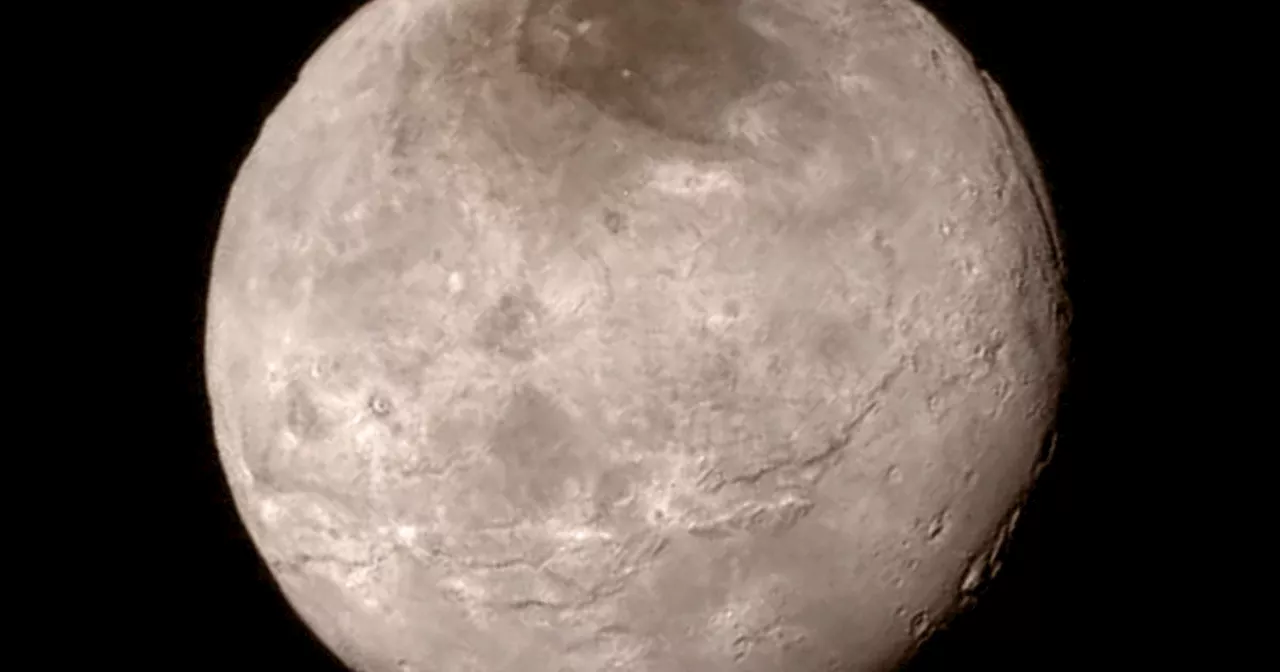 Webb telescope detects carbon dioxide, hydrogen peroxide on surface of Pluto's largest moonResearchers used observations from the Webb Telescope to identify carbon dioxide and hydrogen peroxide on the surface of Charon, Pluto's largest moon.
Webb telescope detects carbon dioxide, hydrogen peroxide on surface of Pluto's largest moonResearchers used observations from the Webb Telescope to identify carbon dioxide and hydrogen peroxide on the surface of Charon, Pluto's largest moon.
Read more »
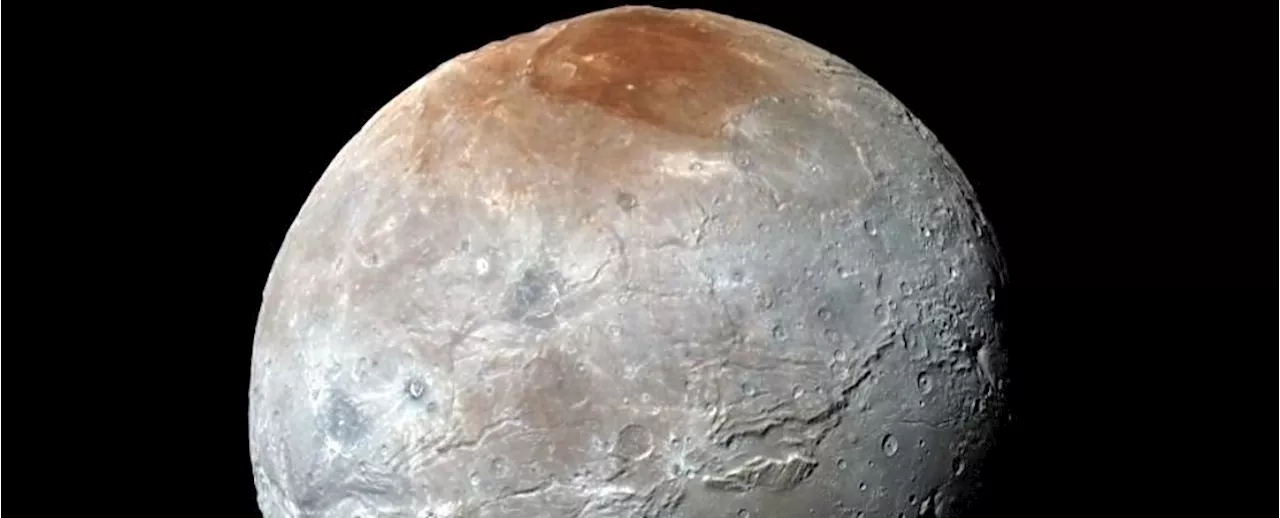 NASA Detects Carbon Dioxide on Surface of Pluto's Moon CharonThe Best in Science News and Amazing Breakthroughs
NASA Detects Carbon Dioxide on Surface of Pluto's Moon CharonThe Best in Science News and Amazing Breakthroughs
Read more »
 Scientists Will Engineer the Ocean to Absorb More Carbon DioxideA research consortium plans to revive geoengineering trials of the controversial iron fertilization technique to pull carbon dioxide from the air, despite public backlash
Scientists Will Engineer the Ocean to Absorb More Carbon DioxideA research consortium plans to revive geoengineering trials of the controversial iron fertilization technique to pull carbon dioxide from the air, despite public backlash
Read more »
 The case for adding iron to the ocean for carbon dioxide removalWhile the urgent reduction of carbon dioxide (CO2) and other greenhouse gas emissions is needed as the primary activity to curb climate change, there is broad agreement for the need to remove CO2 already in the atmosphere.
The case for adding iron to the ocean for carbon dioxide removalWhile the urgent reduction of carbon dioxide (CO2) and other greenhouse gas emissions is needed as the primary activity to curb climate change, there is broad agreement for the need to remove CO2 already in the atmosphere.
Read more »
